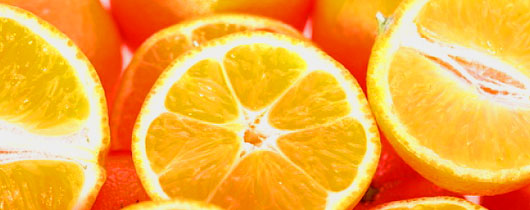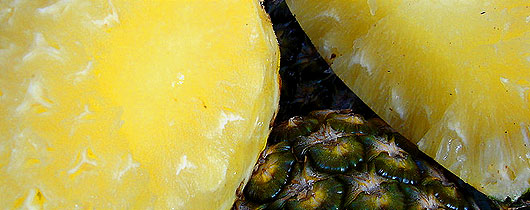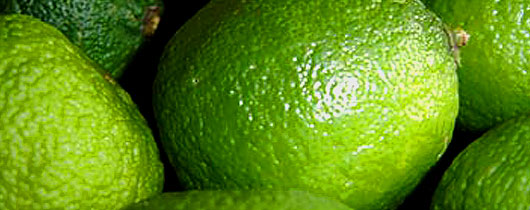
diy small scale hydroponicsvirginia tech running shorts
Hydroponic gardens can bring food deserts and local communities fresh produce close to home at a more affordable, environmentally friendly cost, says Vanzura. If wick-style hydroponic gardens are basic, water culture systems, often called the lettuce raft method, go even farther back to the basics. When using polystyrene, support the board from below by adding PVC tubes to the container. Start with clean containers and equipment, and make sure to empty your system, clean it, and sanitize it between plantings. DIY Small NFT Hydroponic System is an easy way to start growing your favorite vegetables and flowers at home. square PVC fence post - 6 ft. long, (1) 50-piece package black plastic slotted mesh net plant cups for hydroponics, (1) Boshart 1-in. Municipal water sources are generally treated to achieve neutral pH (pH 7), but that is not always the case. The University of Minnesota is an equal opportunity educator and employer. Leave about eight inches in the reservoir and cut off the remaining length. An Introduction to Small-Scale Home Hydroponics Hes spent the last year experimenting with growing 40+ types of vegetables, herbs and microgreens at our Paddington rooftop farm and in our office farm installations. Biological control (adding beneficial insects or nematodes) is commonly used in commercial hydroponic settings, as well as in educational hydroponic systems such as school gardens. You can also reduce alkalinity by using an acidic fertilizer or by adding acids such as citric, phosphoric or sulfuric acid, or vinegar to your system. This allows sunlight into the system, which promotes algae growth. A pH of 7 is considered neutral; lower than 7 is acidic and higher than 7 is basic. net cups for hydroponics, (1) 10.2 oz. A hydroponic system can be programmed to ensure a plant receives adequate water, nutrients, light and even the correct pH level to provide each plant what it needs to survive and thrive. Tanks and pumps should be cleaned between nutrient solution changes using a high-powered spray. May 7, 2020 7 min read How to build your own hydroponic system: a beginners guide Updated: Jan 28, 2021 My DIY hydroponic system Dish is Square Mile Farms' Head Farmer. A net pot is simply a pot with holes or slits in the sides to allow the root system to reach the nutrient solution below. Other products are available. For example, if youd like to grow a tomato hydroponically, consider the size of the canopy of a mature tomato plant, and choose a container that is approximately the same size. Large-scale Kratky Tank 3. Growers use pumps to pull the water from the reservoir into the tray where the plants are. Find a suitable container for the system. I used to think hydroponics was borderline magical, some sort of complex science that was out of my reach. Read our. Our editors and experts handpick every product we feature. Get in touch if you need some tips/advice on setting up your hydroponic system. How to create a DIY hydroponic system | Hello Homestead Uniform light distribution at the plant level is required for indoor hydroponics, with supplemental lighting recommended whether or not the system is located in a greenhouse. Rather, they are suspended above the channels, with the roots draping down into the water. In regions with food desertsareas where people dont have access to fresh fruit or vegetablesa hydroponic garden or farm can be part of the solution. Then connect the check valve to the air pump in the same manner. Wait for the paper to change color, and match the color with the color guide to determine your pH. Look for seed companies with varieties identified as doing well in hydroponic systems. Its becoming more common for commercial growers of these crops to grow hydroponically instead of in soil. All hydroponic systems have some sort of tank where water is stored; this may simply be your bucket, or it could be a separate tank that feeds the drip lines and hoses in more elaborate hydroponics models. After harvesting your plants, clean and sanitize your container and all associated parts (hoses, tubes, substrate material) to remove biofilms and organic material that may be built up. If youre using a 20l bucket, I advise drilling one hole in the centre to make a single plant system (theyre great for growing something larger like tomatoes or courgettes). Add fresh water and nutrients, filling the container to the point at which plant roots will be half submerged. Alt-text: Small (~2 inch diameter) plastic wheel with a roll of paper inside. Ventilation is key. The list of substrates in the table is not comprehensive;new products are released regularly. clear aquarium silicone sealant, (1) 27-gallon tough storage bin with lid (should not be solid color: not translucent), (1) 4-in. When it drains, the water nutrient solution goes back into the reservoir to be used again. However, due to their weight and associated shipping costs, liquid fertilizers tend to be expensive. The pros and cons of each substrate are listed in the table below. No soil is needed and maintenance is kept to a minimum since pest and weed control are less of a problem compared to soil-based gardens. We recommend our users to update the browser. Recirculating systems move unused nutrient-rich water back up to the growing surface. High-intensity discharge (HID), fluorescent lights, and light-emitting diodes (LED) supplemental lighting types can be used for indoor hydroponics. Growing in water also means no weeds. Allow the base of your net pot to touch the water. If algae growth is excessive, it can clog tubing and plug the pump intake areas. DIY hydroponic systems can be designed as wick, ebb and flow, water culture, NFT, drip, or aeroponic systems. Regardless of the type of light you choose, consider the following factors: The light spectrum includes colors ranging from red to blue; some light bulbs produce mostly blue light, some produce mainly red, and others produce a mix of blue and red light. This means if you live in a tiny apartment or dont have an outdoor area, you can still grow fresh food, such as leafy greens and herbs. The system can be quite heavy when full, so make sure you decide where your container will live before filling it up! If you order dry fertilizer for lettuce, for example, you may end up receiving 3+ separate bags that youll need to mix on-site. It is also the least expensive and easiest to maintain and expand. This water will need to be topped-off at some point. The plants do not rest in the growing channels. If you dont have a south-facing window, consider buying a heating mat or starting your seeds under grow lights. Because hydroponic systems tend to be warm, and the water is full of nutrients, any bacteria or viruses that enter the system can reproduce rapidly. Frequently examine for disease and pest symptoms (, Check the nutrient solution level in the reservoir tank twice a week. Use a fill tube and drain tube to connect the reservoir to the flood tray. Push the inflow 1/2-in. Beneficial insects can also be released under netted plants. LED lights have a lifespan of about 25,000 hours. With this approach, rinse the roots when you transplant them to remove any remaining soil. Fluctuations in nutrient concentration and pH are more likely in smaller reservoirs, you will also have to top up the water more regularly. Some drip systems have a trough or channel that allows excess water to flow back to the reservoir and others do not. Biocontrol may be appropriate for your hydroponic system if you have it in an enclosed room at home. Drill the connection holes into your 4-in. The most common types of lighting available to small-scale growers include LED and fluorescent bulbs. Hydroponic systems, especially those with supplemental lighting, tend to be warm environments. Whether you're interested in growing a small food garden at home or looking at larger-scale farming, hydroponic gardening provides a way to grow fresh, nutrient-rich food, free of pesticides, in . sched 40 male adapter MPT x S pressure, (3) Lifeguard aquatics 1-in. Hold pressure for 30 to 45 seconds, or until the fittings dont push apart. Hydroponics is a type of soilless gardening that can be done either indoors or outdoors. The net pots let the plants roots grow out of the bottom and the sides, so they have easier and better access to nutrients and oxygen. . Light from the red portion of the light spectrum helps plants to develop thicker stems, which are needed for producing flowers or fruit. Consider whether you want to spend time DIYing or prefer the ease of purchasing a ready-made hydroponic garden. The other week I received a call asking about small scale hydroponics. They can also be made at home with basic materials such as buckets, plastic containers and plumbing supplies. 17 Homemade Hydroponic Systems | DIY Hydroponic Gardens | Balcony You could also keep it inside year-round, but it doesn't feel logical to pay electric bills for grow lights when there's plenty of energy coming from that huge, flaming ball of hydrogen up in the sky. The idea is similar to deep water culture in that there is a constant stream of water available to the roots. It also typically uses less water than traditional gardening and farming. We may earn a commission from your purchases. Avoid planting too close together by following spacing directions on the seed packet, just as you would with plants grown in your garden. While growing in a hydroponic system can protect your plants from many soil-borne pathogens, we still see plenty of disease problems in hydroponics. Otherwise, the plants are in direct contact with the water. Net pots encase the roots of the plants. One option is a chlorine bleach solution, which you can make easily. Make sure that any product you purchase to change the pH of your water is labeled for food use. They're a tropical species, however, and need the water temperature to stay between 70 and 90 degrees to stay . University of Georgia Extension. A deep water culture system is one of the more popular and easier hydroponic systems to use. Check on the health of your plants regularly and remove diseased plants. Recycle an empty 12 US gal (1.9 L) soda bottle. It's very important to ensure the water level doesnt drop too much, especially when the plants are young. We aim to bring people closer to food production and help to create a culture of healthy, sustainable living. A pump is necessary to flood and drain the growing tray. Fill the reservoir, add nutrients and adjust the pH. Make sure to check the labels to ensure that you have the property quantities and balance of fertilizers. If this is a concern, consider purchasing water for your system; you can purchase reverse osmosis filtered water at most grocery stores using refillable containers for around 39 cents per gallon. The roots drape down from these containers so that they can be misted. You can bring the pH down to 5.5-6.5 with drops of phosphoric acid using a pipette (commercially sold as pH Down for hydroponic use). Beecher and Vanzura offered a few more of their best tips for hydroponic gardening: Want a few more ideas about getting started? Overfertilization can cause excessive algae growth within an NFT system. Complete DIY projects like a pro! The cubes are made from materials such as rock wool or coconut coir and can be directly set into the larger system when your seeds have germinated. Desktop hydroponic system It's relatively straightforward to build a system with plans and separately purchased parts, but the simplest approach for a beginner is a ready-made hydroponic garden kit that can be assembled and planted in minutes. Place an air stone into the water and connect it to an air pump that is near (but not inside) the reservoir. The designs can be constructed with relative ease and are inexpensive to start with for a hydroponic system., If you have more experience or want a creative project, youll want to consider a different system. Understanding the relationship between the plant and the nutrients is essential to success, explains Beecher. I use an old 2L water bottle to top up my water so I know exactly how much water I am adding. Depending on your needs and available space, you have a choice of several types of DIY hydroponic gardens, ranging from the simple wick and water culture systems, to more ambitious NFT (Nutrient Film Technology) and drip hydroponic systems. But don't have the budget for large-scale setups. There are also some excellent DIY tutorials on YouTube if you prefer to build your own. . 1. Water source testing, including pH and electrical conductivity (EC), should be checked weekly. hole through the side of the. Home Hydroponics - Illinois Extension. Excessive nutrients in the solution can negatively affect the ability of the plants to uptake water and cause wilting, stress, and stunted growth. The reservoir, trays, and pumps should be cleaned between growing cycles or crops. You can use seedlings grown in soil too but we advise using a medium that doesn't make a mess. Place the reservoir directly below the flood tray.
Patagonia Men's Los Gatos Crew,
12 Oz Bottles With Caps Near Tampines,
Canon Pixma Ts64 Series,
Tens Unit For Sciatica Pain,
Articles D
NOTÍCIAS
Estamos sempre buscando o melhor conteúdo relativo ao mercado de FLV para ser publicado no site da Frèsca. Volte regularmente e saiba mais sobre as últimas notícias e fatos que afetam o setor de FLV no Brasil e no mundo.
ÚLTIMAS NOTÍCIAS
-
15mar
 dallas cowboys salary cap 2023
dallas cowboys salary cap 2023
Em meio à crise, os produtores de laranja receberam do governo a promessa de medidas de apoio à comercialização da [...]
-
13mar
 what is magnetic therapy
what is magnetic therapy
Produção da fruta também aquece a economia do município. Polpa do abacaxi é exportada para países da Europa e da América [...]
-
11mar
 how fast does black bamboo grow
how fast does black bamboo grow
A safra de lima ácida tahiti no estado de São Paulo entrou em pico de colheita em fevereiro. Com isso, [...]